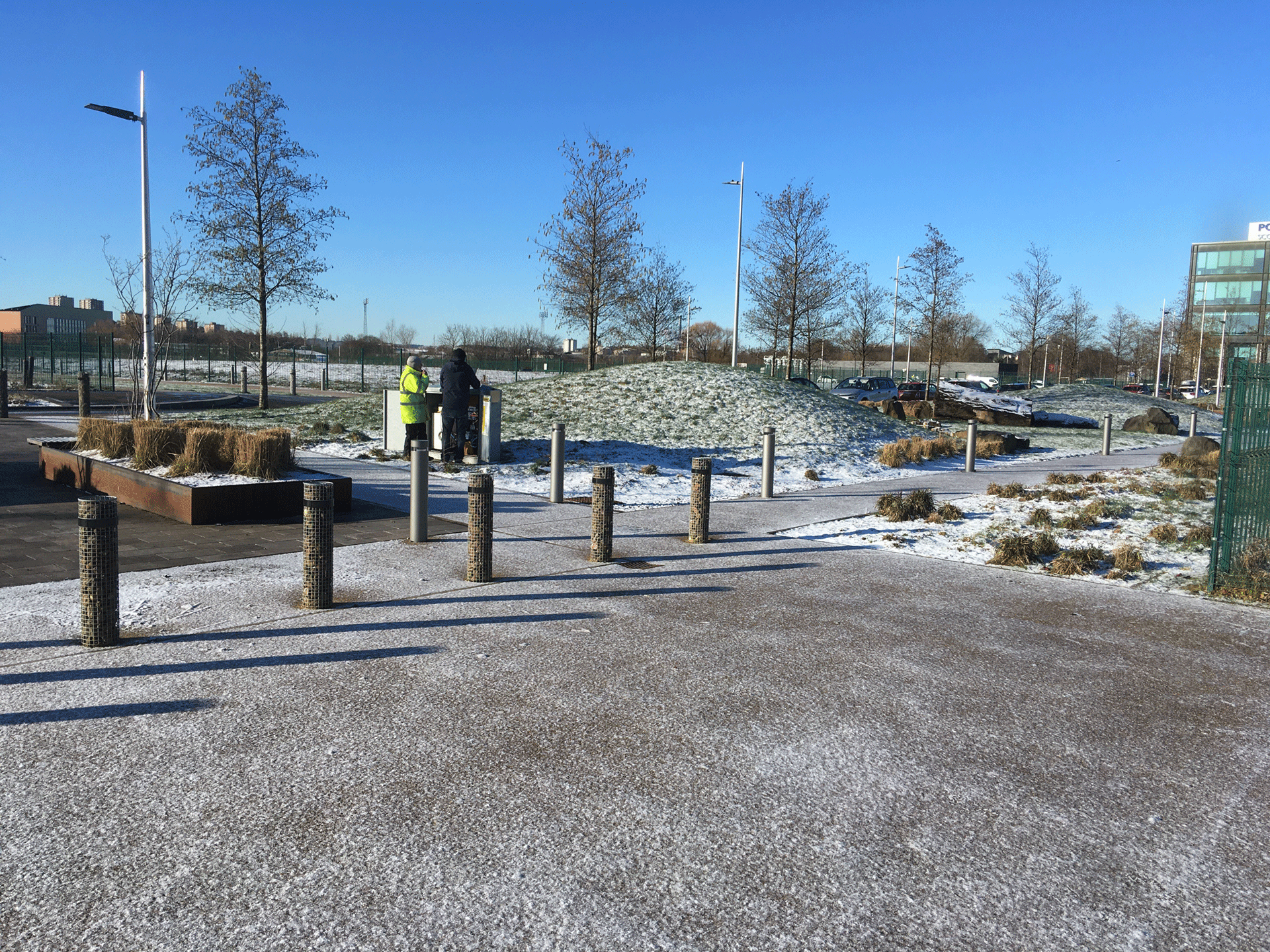Summary
A number of boreholes have been drilled at the site to ~200m (Figure 3). These boreholes penetrate abandoned coal mines, and the BGS in conjunction with other scientific communities are investigating:
- Subsurface characterisation and monitoring of abandoned mines
- Understanding transfer of heat and flow processes of groundwater
- Chemical and biological processes that may be impacted by mine water heat and heat storage activities
- Resource characterisation and sustainability
- Environmental monitoring, impacts and management
Although no seismicity is expected to be induced by activities at the observatory, it is critical to discriminate between naturally occurring earthquakes and those caused by geothermal activities.
Long term monitoring means that changes in the spatial or temporal behaviour of small seismic events can be identified. Ensuring the safety of any operation in this project is essential, but also provides valuable data to help with deducing the viability of this kind of geothermal energy capture in urban areas.
Project requirements
The instruments required by BGS required a wide dynamic range and broad frequency response to monitor seismicity over the entire seismic spectrum.
The depth of the boreholes meant that standard analogue cables feeding into a surface station would have suffered from interference effects. BGS also intended to deploy 5 instruments in a string spaced by 40m. Both of these cabling challenges had to be accounted for.
Figure 4: Main research compound at the Glasgow UKGEOS observatory. Source: BGS
Güralp solution
The Radian is a very broadband sensor suitable for deployment in post- or borehole settings. With a frequency response from 120s to 200Hz it is well suited to the needs of BGS at the Glasgow Observatory.
A standout feature of the Radian is its operational tilt tolerance of ±180°, it can operate at any angle. This is possible because it is a digital sensor and its onboard MEMS and magnetometer combine to provide the exact orientation of the instrument once at its intended deployment.
The Radian borehole comes with an option for either a single or triple hole-lock depending on the intended position within the borehole.
A velocity or acceleration output can be selected upon order based on the target signals of the project. The overall versatility of this instrument makes it desirable for a vast range of applications.
The Radian can be deployed as a string of instruments (VSP) and its design allows modular additions without the need for extra cabling.
The instrument’s stainless streel housing ensures smooth operation up to its 2000m rated depth.

Figure 5: The Güralp Radian Posthole (left) and Borehole (right)
Deployment
In total 5 Radians were deployed in a string in one of the boreholes at the Glasgow Observatory. Because of the borehole diameter and nature of the stringed installation BGS opted for the motorised triple hole lock system at the top and bottom of each instrument to ensure the integrity of the instruments over their long-term monitoring role.
Since the Radian can operate at any angle, its position in the borehole could be selected precisely regardless of any divergence from vertical. The five sensors are deployed at depths of 40m, 80m, 120m, 160m, 198m.
The Radian can record data at 200 Hz, which allows time differences to be recognised between instruments placed only 40m apart.
Outcome
The string of borehole instruments at the Glasgow Observatory now records and streams data from all five sensors in real-time to the BGS.
The data is analysed to distinguish between local noise and earthquakes. This is done by comparing the spikes to other nearby stations. By analysing this data, BGS can assess the effects of geothermal energy activities. This data provides valuable evidence for the viability of clean energy sources as we move towards a net zero future whilst ensuring the safety of the surrounding urban area.






